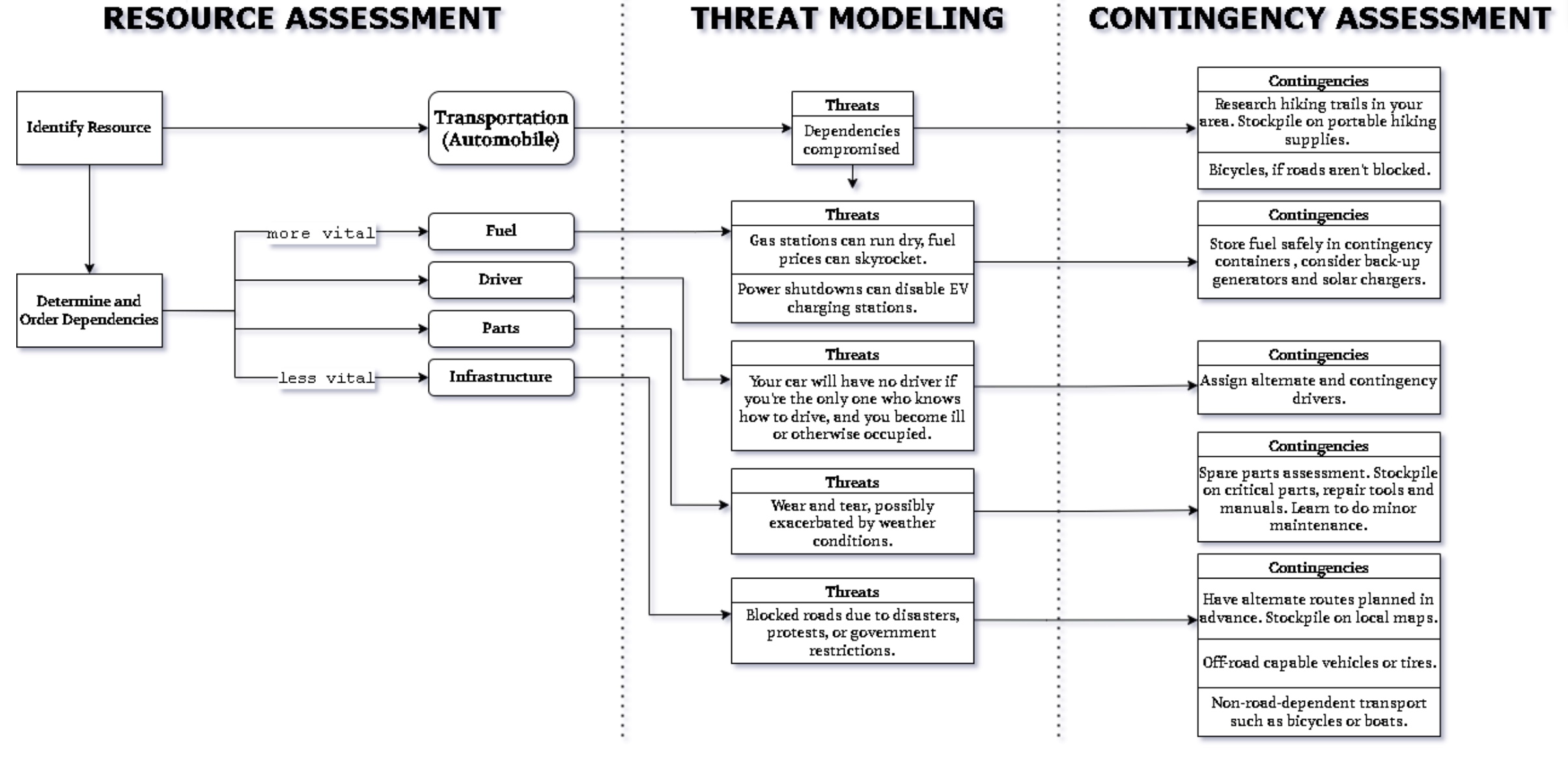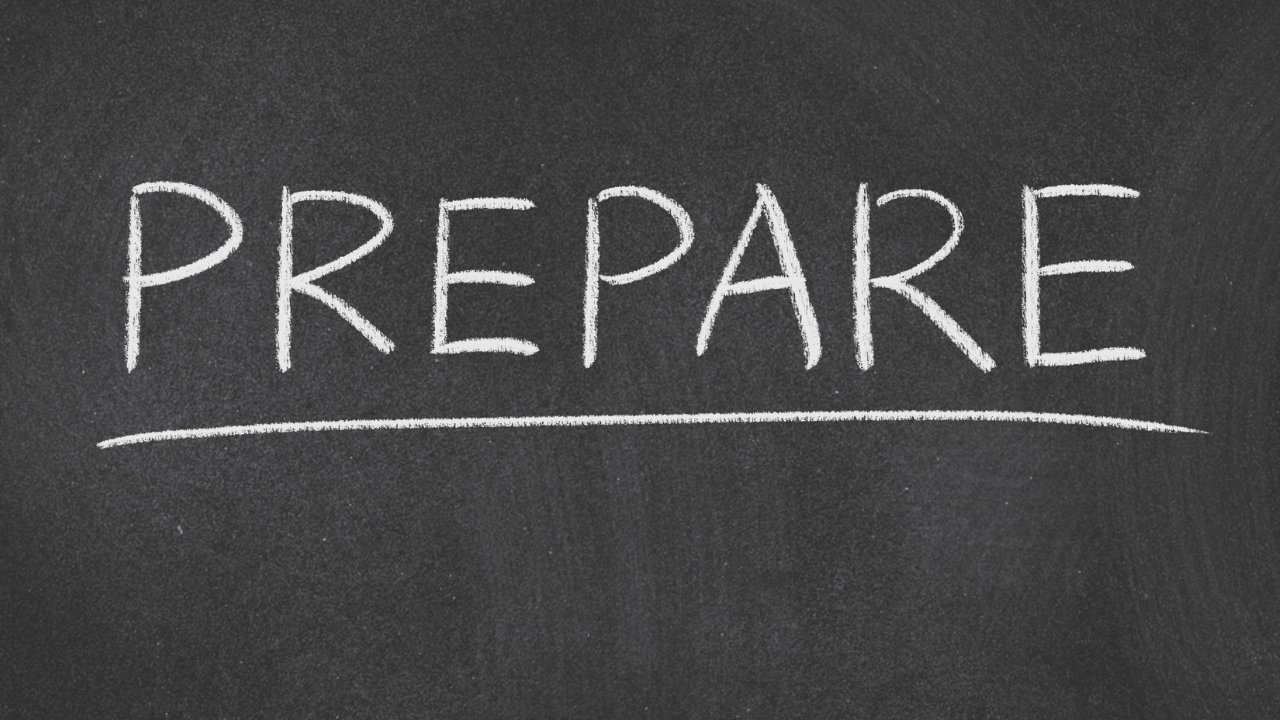A contingency is defined as "a provision for a possible event or circumstance". A good contingency not only adequately replaces one of your resources, but it does so at exponential value. What this means is that they should not depend on the same services and infrastructures, so that their collapse does not compromise several of your options at once.
For instance, if you rely on your car for transportation, having a motorcycle as a backup is useful to a degree but not a reliable contingency. If gasoline becomes a valuable resource, you’ll ultimately have to choose between the two, or even be unable to use either of them entirely. The ideal solution would be creating a contingency for the resource that powers your car (gasoline), creating a contingency for the car itself, or both.
This same methodology applies to everything else you may need a contingency for, and it’s something you should always weigh and think about when creating contingencies.

Knowing which things your resources depend on is an important part in creating contingencies. An ideal and exponential-value contingency plan gives you options to replace not only your resources, but also alternatives for the secondary resources those very things depend on.

PACE SYSTEM
The PACE system is a framework for developing contingency plans, which should be your go-to for knowing your options when it comes to the breakdown of information infrastructure.
PACE stands for Primary, Alternate, Contingency and Emergency. In the case of an emergency, you should stick to going from top to bottom on the list:
- Primary: Your Primary recourse is the best available, and the intended method for everyday communication. It should be the most widely applicable method of communication in your area. This will most often take the form of social media, e-mail, or phone calls and texts.
- Alternate: Your Alternate recourse should be a widely-used but less optimal method of communication. Your alternate recourse is not only what you will use when your Primary device fails, but also when the infrastructure supporting that device fails. It should ideally run on completely different systems, on top of being a completely different device. In the case where local cell phone coverage might be down, good options include satellite internet services such as Hughesnet, Viasat and Starlink, and satellite phones such as Iridium, Inreach Messenger or SPOT.
- Contingency: Your Contingency recourse is less convenient, but more reliable. Your contingency should not rely on any pre-existing infrastructure, but it should also be something that’s not necessarily always on standby, yet that you know how to deploy and use.
The most obvious case for contingency communications is radio communications, which are robust and impossible to dismantle. You’re recommended to set up a small mini-PACE priority system of priorities, ranging from common radio stations down to emergency frequencies, before resorting to broadcasting and transmitting out of your own initiative to establish combat.
- Emergency: It’s worth it to keep at least one Emergency recourse on hand, which will work even when your contingency device is compromised. These are not built to carry long, casual conversations— they should be a last resort to carry vital information to those who need it. These include distress beacons, flashing lights in morse and written messages.
PRIMARY COMMUNICATIONS
Maintain emergency contacts. Create a list of emergency phone numbers, including emergency services, a family contact sheet, and “In Case of Emergency” (ICE) contacts, and put them into your cell phone.
If you have a life-threatening emergency, call 911. If you do not have a life-threatening emergency, then don’t call 911— phone lines are surprisingly easy to clog up in a disaster.
Call the police or fire department instead, in these cases. 911 is mostly reserved for life-threatening or limb-threatening emergencies, and violent crimes actively in progress. Contributing to clogging up the line can cost lives.
Use social media instead of making voice calls. Data-based services like texts and emails are less likely to experience network congestion. You can also use social media to post your status to let family and friends know you are okay.
If you are unsuccessful in completing a call using your cell phone, wait ten seconds before redialing to help reduce network congestion.
Conserve your cell phone battery by reducing the brightness of your screen, placing your phone in airplane mode, and closing apps you are not using that draw power, unless you need to use the phone.
If you lose power, you can charge your cell phone in your car. Just be sure your car is in a well ventilated place (remove it from the garage). You can also listen to your car radio for important news and alerts.